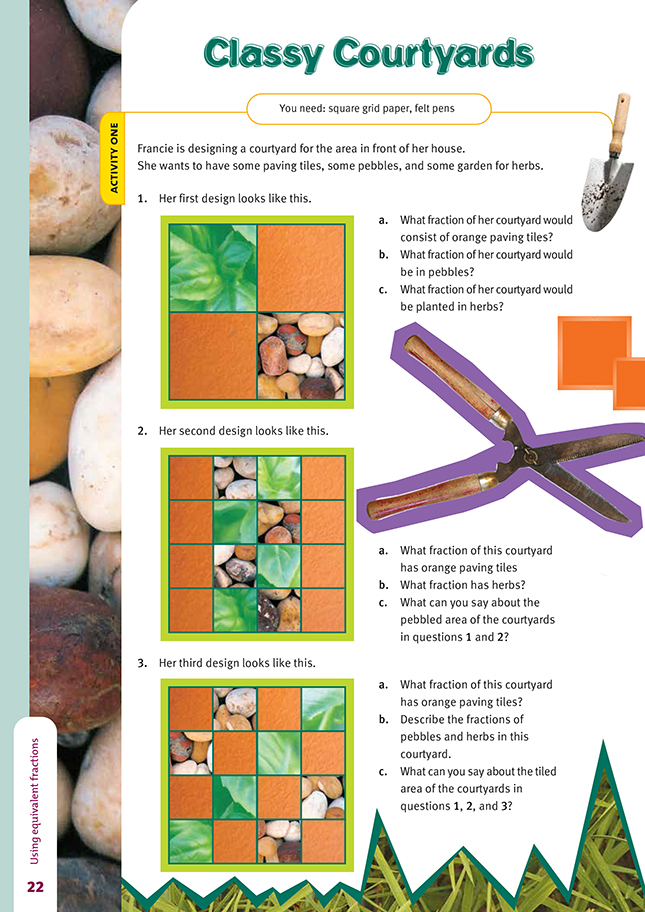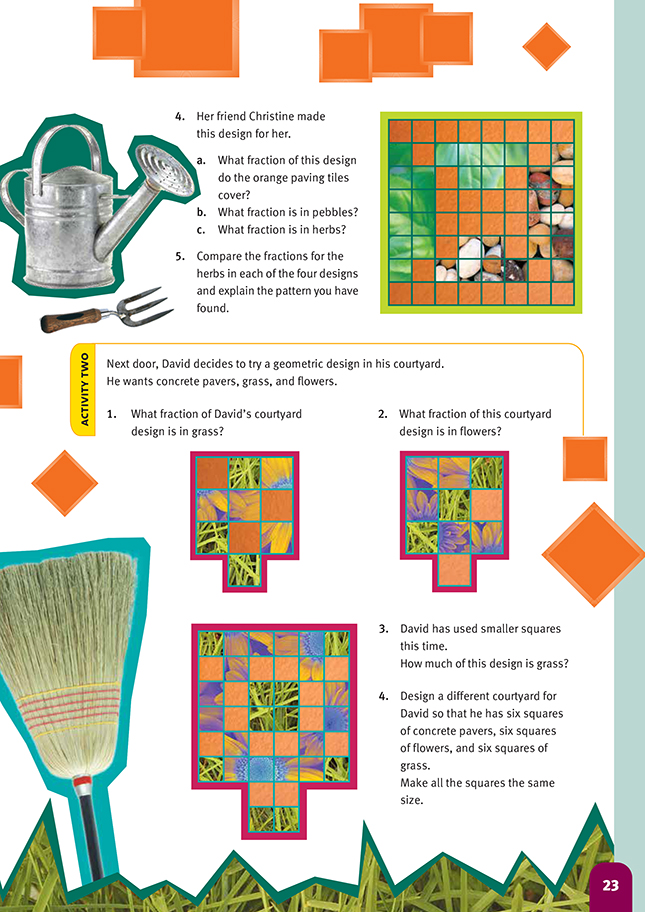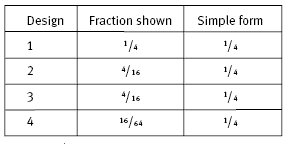This is a level 3 number link activity from the Figure It Out series. It relates to Stage 6 of the Number Framework.
A PDF of the student activity is included.
Click on the image to enlarge it. Click again to close. Download PDF (527 KB)
identify a fraction of a region
identify equivalent fractions
Square grid paper
FIO, Link, Number, Book Two, Classy Courtyards, page 22-23
Felt pens
These activities encourage students to visualise equivalent fractions of the whole as well as of the parts ithin the whole. You may need to introduce the students to the convention of changing a fraction to its implest equivalent form.
Activity One
Before your students attempt the questions, draw their attention to the courtyard in the first four designs. They should identify this as the “whole” to which the fractional parts refer. They should also note the equivalent fractions shown for the whole in each design. The first design shows the whole as 4/4 , the second and third designs show the whole as 16/16 , and the fourth design shows the whole as 64/64. These are all equivalent forms of 1.
As an extension, the students could explore other equivalent fractions for one whole. When you are working with the students on these fractions, record them in a random number order, such as 1 = 3/3 = 5/5 = 2/2 = 10/10 = 4/4, rather than in a sequential pattern that can result in the misunderstanding that the size is increasing, as in 1 = 2/2 = 3/3 = 4/4 = 5/5 = 10/10.
As the students complete all the questions for each design, it would be a good idea to have them combine the fractions for each part so that they can see that it makes the whole.
Design 1 will have 2/4 + 1/4 + 1/4 = 1, which simplifies to 1/2 + 1/4 + 1/4 = 1.
Design 2 will have 8/16 + 4/16 + 4/16 = 1, which simplifies to 1/2 + 1/4 + 1/4 = 1.
Design 3 will have 8/16 + 4/16 + 4/16 = 1, which simplifies to 1/2 + 1/4 + 1/4 = 1.
Design 4 will have 32/64 + 16/64 + 16/64 = 1, which simplifies to 1/2 + 1/4 + 1/4 =
This may help them to see the equivalence connections and how the simplified form makes the equivalences obvious.
Question 5 asks the students to compare the fractions planted in herbs. This could be recorded in chart form:
All of them show that 1/4 of the courtyard is planted in herbs.
Activity Two
This activity uses a non-square visualisation of a whole and enables denominators that are not square numbers to be imaged.
For question 4, you could ask the students to record the fractions of the parts as 6/18 and as 1/3. As with David’s other designs, the students’ designs will not be square. They could also record an equation such as 1/3 + 1/3 + 1/3 = 1 to show the whole courtyard.
Answers to Activity
Activity One
1. a. 2/4 or 1/2
b. 1/4
c. 1/4
2. a. 8/16 or 1/2
b. 4/16 or 1/4
c. It is 1/4 of each design and therefore equal.
3. a. 8/16 or 1/2
b. Both are equal: 4/16 or 1/4
c. The tiled area of each courtyard is half of the total area: 2/4 and 8/16. These are equivalent fractions.
4. a. 32/64 or 1/2
b. 16/64 or 1/4
c. 16/64 or 1/4
5. The herb gardens are 1/4 , 4/16 , and 16/64 . They are all equivalent fractions.
Activity Two
1. 3/10
2. 5/10 or 1/2
3. 10/40 or 1/4
4. Answers will vary.


